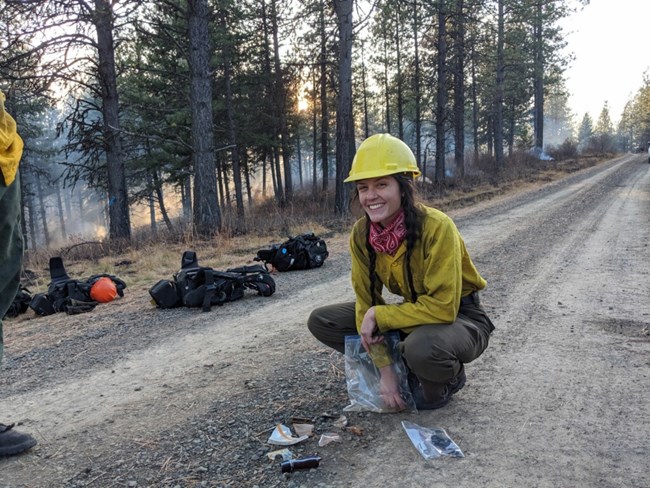Last updated: October 7, 2021
Article
Fire Suppressants and Cultural Resources

Kaitlyn Eldredge comes to the National Center for Preservation Technology and Training to answer that question and more. In May, Eldredge began research on how fire suppressants interact with cultural materials and what we can do to remove them after the fire has passed.
Fire suppressants and retardants are chemicals that are commonly used to fight wildland fires and protect both natural and cultural resources. A new generation of chemicals have come into use over the course of the last decade. While protecting important cultural heritage resources from catastrophic destruction is the role of fire managers, it is prudent that federal facility and resource managers become familiar with the properties, potential adverse effects, application, and remediation of chemicals used in fire suppression.
Eldredge is setting out to discover the information fire fighters and cultural resource managers need to do their jobs better. She is designing the first phase of this research project to answer several questions, including:
- How do fire suppressants change the physical appearance of a cultural material?
- Do negative physical changes last long?
- To what depth does each fire suppressant penetrate the surface of each cultural material?
- Do fire suppressants change or alter the physical strength of the material?
- Does a combination of fire suppressants and combustive residue of burning fuels increase the discoloration of cultural materials?
- How resistant are fire suppressant to removal from cultural materials?
Eldredge will look at four different fire suppressants for the study, including products by Phos-Chek, Silv-Ex, Thermo-Gel, and FireIce. She will apply these products to surrogate cultural materials such as adobe, low-fired brick, ponderosa pine, and sandstone.
Based the first phase of research, Eldredge will explore safe methods to remove fire retardants and suppressants from cultural resources after exposure. The two-year study is expected to be complete in 2022.
